Who Are The Youngest Nobel Prize Winners In Hisrory - Top 10
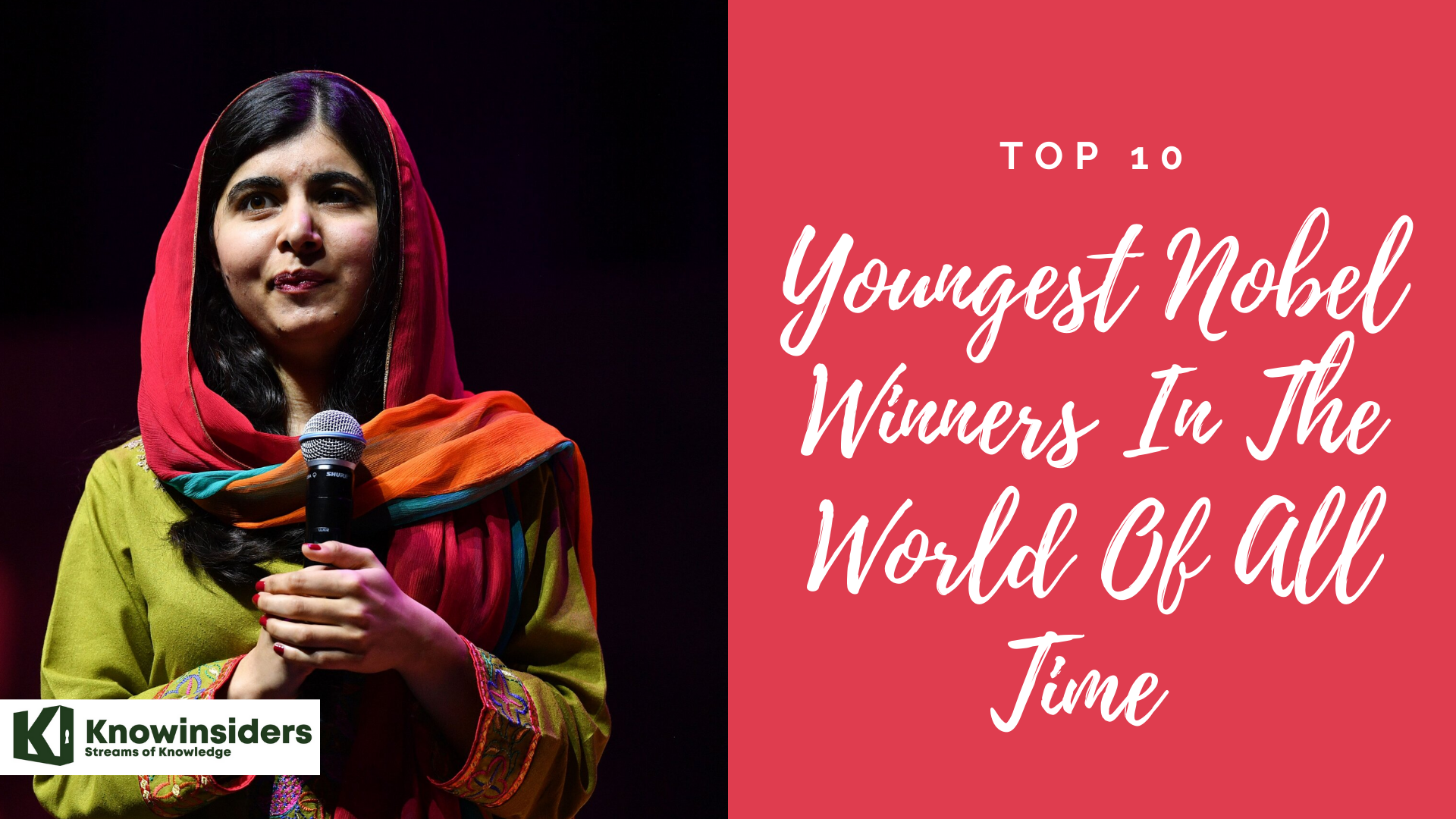 |
| Top 10 youngest Nobel winners in the world of all time |
The Royal Swedish Academy of Sciences, the Swedish Academy, the Karolinska Institutet, and the Norwegian Nobel Committee present the Nobel Prizes annually to people and organizations that have made outstanding contributions to chemistry, physics, literature, peace, physiology, or medicine.
They were created by Alfred Nobel's 1895 will, which stipulated that the Nobel Foundation be in charge of managing the prizes. The Sveriges Riksbank (Sweden's central bank) established an additional award in honor of Alfred Nobel in 1968 for exceptional contributions to the field of economics.
The Nobel Prize is a very distinguished honor given to those who have made outstanding achievements to their respective fields. Throughout history, there have been a number of exceptionally young people who have won the Nobel Prize.
There were a total of 615 recipients of Nobel Prizes or Sveriges Riksbank Prizes in Economic Sciences in Memory of Alfred Nobel between 1901 and 2023. There have been a total of 954 people and 27 institutions honored with the Nobel Peace Prize, with some recipients winning the award more than once.
Let’s take a look at the list oftop 10 youngest Nobel winners in the world of all time
Top The 10 Youngest Nobel Laureates in Hisrory
Malala Yousafzai, who received the Peace Prize at the age of 17, William Lawrence Bragg and his father, William Henry Bragg, who shared the Physics Prize in 1915 at the ages of 25 and 45, respectively, Werner Heisenberg, who received the Physics Prize in 1932 at the age of 31, and Dorothy Crowfoot Hodgkin, who received the Chemistry Prize in 1964 at the age of 44, are among the top 10 youngest Nobel laureates of all time.
Other notable young Nobel laureates include Tawakkol Karman, 32, who won the Peace Prize for her activism in Yemen, Albert Schweitzer, 38, who received the Peace Prize for his humanitarian work, and Frederick G. Banting, 32, who received the Medicine Prize for his discovery of insulin. In addition to making important advances in their fields, these young Nobel laureates are role models for the coming generation of scientists, activists, and leaders.
10. Tawakkol Karman (32)
 |
| Photo: Getty Images |
Yemeni Nobel Laureate Tawakkol Abdel-Salam Khalid Karman was born on February 7, 1979. He is also a journalist, politician, and human rights activist. She was the co-founder of the organization "Women Journalists Without Chains," which she now leads. She rose to prominence as the public face of the 2011 Arab Spring-related uprising in Yemen. She reportedly received the nicknames "Iron Woman" and "Mother of the Revolution" in 2011 from some Yemenis. She shares in the 2011 Nobel Peace Prize, making history as the first Yemeni, first Arab, and second Muslim woman to do so.
As a Yemeni journalist and an advocate for a mobile news service that was denied a license in 2007, Karman rose to prominence in her home country after 2005. She then led demonstrations in support of press freedom. After May 2007, she set up weekly demonstrations and expanded the demands for change. After the Tunisians toppled Zine El Abidine Ben Ali's regime in January 2011, she redirected the Yemeni protests to support the "Jasmine Revolution," as she refers to the Arab Spring. She was an outspoken critic who demanded the overthrow of President Ali Abdullah Saleh's government.
9. Mairead Corrigan (32)
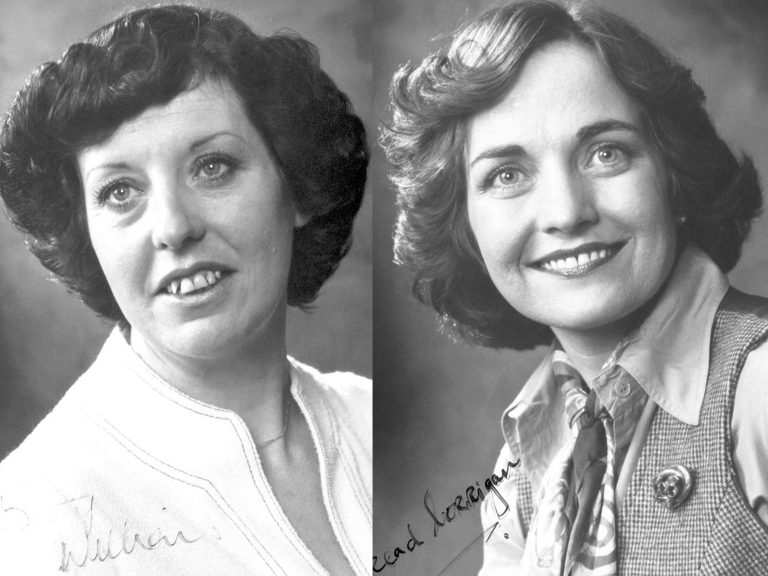 |
| Photo: Nobel Prize |
Northern Irish peace activist Mairead Maguire, also known as Mairead Corrigan Maguire and formerly as Mairéad Corrigan, was born on January 27, 1944. Together with Betty Williams and Ciaran McKeown, she co-founded the Women for Peace, an organization devoted to promoting a peaceful resolution to the Troubles in Northern Ireland. This organization later changed its name to the Community for Peace People. 1976 saw Maguire and Williams receive the Nobel Peace Prize.
She has criticized the Israeli government's policy toward Gaza since 2008, focusing on the naval blockade in particular. Maguire boarded the MV Rachel Corrie in June 2010 as part of a flotilla that made an unsuccessful attempt to break the blockade.
Ben-Dror Yemini, a well-known columnist for the Israeli newspaper Ma'ariv, claimed that Maguire was fixated on Israel after the 2009 Gaza flotilla. "There is a lunatic coalition that doesn't care about the people who were killed in Sri Lanka or the Tibetans who are being mistreated. They only observe the conflict with the Israeli Satan. He added that Maguire chose to associate with a group that elected an openly antisemitic movement as its leader, a movement whose goal is to topple the Jewish state.
Maguire's activism, according to Eliaz Luf, the deputy head of the Israeli foreign mission in Canada, benefits Hamas and other terrorist groups in Gaza.
A hateful, antisemitic agenda has been advanced by Maguire's actions, despite their likely well-intentioned nature, according to Michael Elterman, chairman of the Canada-Israel Committee Pacific Region.
The Jerusalem Post referred to Maguire's comparison of Israel's nuclear weapons to Auschwitz' gas chambers as "outrageous" in an editorial published on October 4, 2010, titled "The disingenuous Nobel laureate," and asserted that "Israel can and must use its sovereignty to stop people like Maguire who are essentially seeking to endanger the lives of Israeli citizens." The Post praised Maguire's expulsion from Israel, noting that she had done "actions that undermine Israel's ability to protect itself," not because of her outrageous comparison of Israel's alleged nuclear capability to Auschwitz' gas chambers in 2004, nor because of her ridiculous, reprehensible claim that Israel is a "apartheid state" that is committing "ethnic cleansing against Palestinians" made in court on Monday.
8. Frederick G. Banting (32)
 |
| Photo: Getty Images |
The co-discoverer of insulin and its therapeutic potential, Sir Frederick Grant Banting KBE MC FRS FRSC (November 14, 1891 – February 21, 1941) was a Canadian medical scientist, physician, painter, and Nobel laureate.
Banting returned to Canada after the war in 1919 and briefly worked as a doctor in London, Ontario. He completed his orthopaedic medical training while working as a resident surgeon at Toronto's Hospital for Sick Children in 1919–1920. In addition to his general practice, he taught orthopaedics at the University of Western Ontario in London, Canada, on a part-time basis from 1920 to 1921. From 1921 to 1922, he served as a lecturer in pharmacology at the University of Toronto. He received both a gold medal and his M.D. degree in 1922.
However, Banting had earlier developed a strong interest in diabetes. Researchers Naunyn, Minkowski, Opie, Schafer, and others had found evidence that diabetes was brought on by a deficiency in a protein hormone secreted by the pancreatic islets of Langerhans. This hormone was given the name insulin by Schafer, and it was believed that because insulin regulates the metabolism of sugar, its absence causes blood sugar levels to rise and extra sugar to be excreted in the urine. Attempts to replace the missing insulin by giving patients fresh pancreas or pancreatic extracts had failed, most likely because the pancreatic proteolytic enzyme had broken down the protein insulin in these sources. So the issue was how to get insulin out of the pancreas before it was destroyed in this way.
When Banting was thinking about this issue, he read an article by Moses Baron in a medical journal. In it, Baron noted that when the pancreatic duct was experimentally closed by ligatures, the cells of the pancreas that secrete trypsin degenerated but the islets of Langerhans were unaffected. This gave Banting the idea that by destroying the cells that secrete trypsin, ligation of the pancreatic duct would prevent the destruction of the insulin. Then, after enough time had passed for the trypsin-secreting cells to degenerate, insulin could be extracted from the intact islets of Langerhans.
Banting was determined to look into this possibility, so he discussed it with a number of people, including J.J.R. Macleod, a professor of physiology at the University of Toronto, who gave him access to facilities for conducting experiments on it. Banting hired Dr. Charles Best, a medical student at the time, as his assistant, and the two of them got to work on the research that would eventually lead to the discovery of insulin.
John James Rickard Macleod and Banting shared the 1923 Nobel Prize in Medicine. Banting and his colleague Charles Best split the honors and prize money. Banting, who won the Nobel Prize at age 32, is still the youngest recipient of the award in the category of Physiology and Medicine as of November 2018. The Canadian government gave Banting a lifetime annuity in the same year so he could continue his research. King George V knighted him in 1934.
7. Rudolf Mssbauer (32)
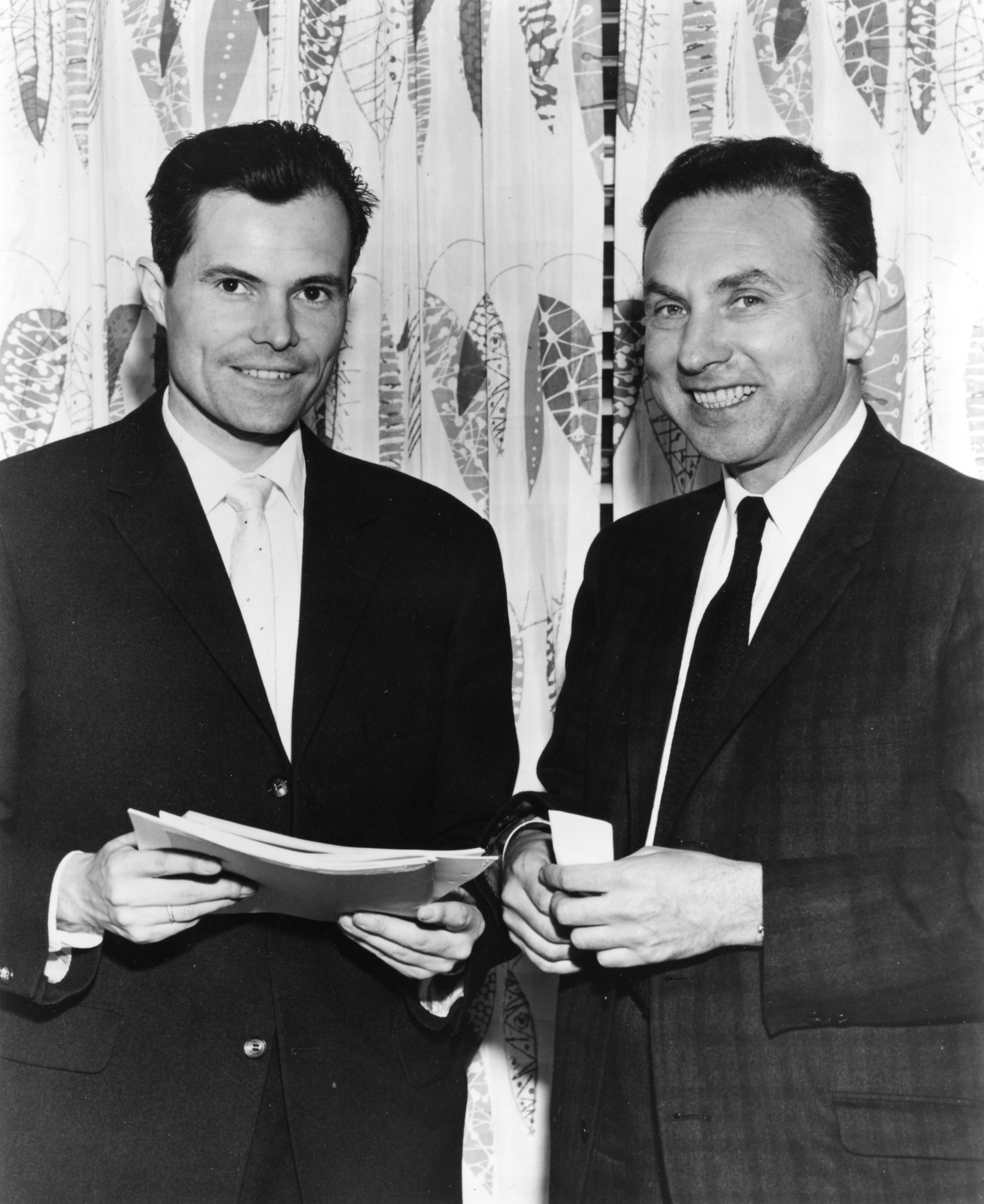 |
| Photo: Getty Images |
The son of Ludwig Mössbauer and his wife Erna, née Ernst, Rudolf Ludwig Mössbauer was born in Munich on January 31, 1929. He attended the "Oberschule" in Munich-Pasing, a non-classical secondary school, and graduated in I948.
He began studying physics at the Technical University (Technische Hochschule) in Munich in 1949 after spending a year working in industrial laboratories. He completed his intermediate degree exams in 1952. He finished his thesis between the years of 1953 and 1954 at the Technical University of Munich's Laboratory for Applied Physics while serving as an assistant lecturer in the Institute of Mathematics.
He conducted a number of investigations at the Institute for Physics of the Max Planck Institute for Medical Research in Heidelberg while working on his doctoral thesis from 1955 to 1957, during which time he made the first experimental observation of the Recoilless Nuclear Resonance Absorption phenomenon.
He earned his degree from the Technical University of Munich under Professor Maier-Leibnitz in January 1958. At the Max Planck Institute in Heidelberg once more in 1958, he offered the first direct experimental proof of Recoilless Nuclear Resonance Absorption's reality. He was hired as a scientific assistant at the Technical University of Munich for 1959.1 In 1960, he agreed to an invitation from the California Institute of Technology in Pasadena, California, and there, initially as a Research Fellow and later as a Senior Research Fellow, he continued his studies of gamma absorption. At the California Institute of Technology, he was appointed professor of physics in 1961.
6. Tsung-Dao Lee (31)
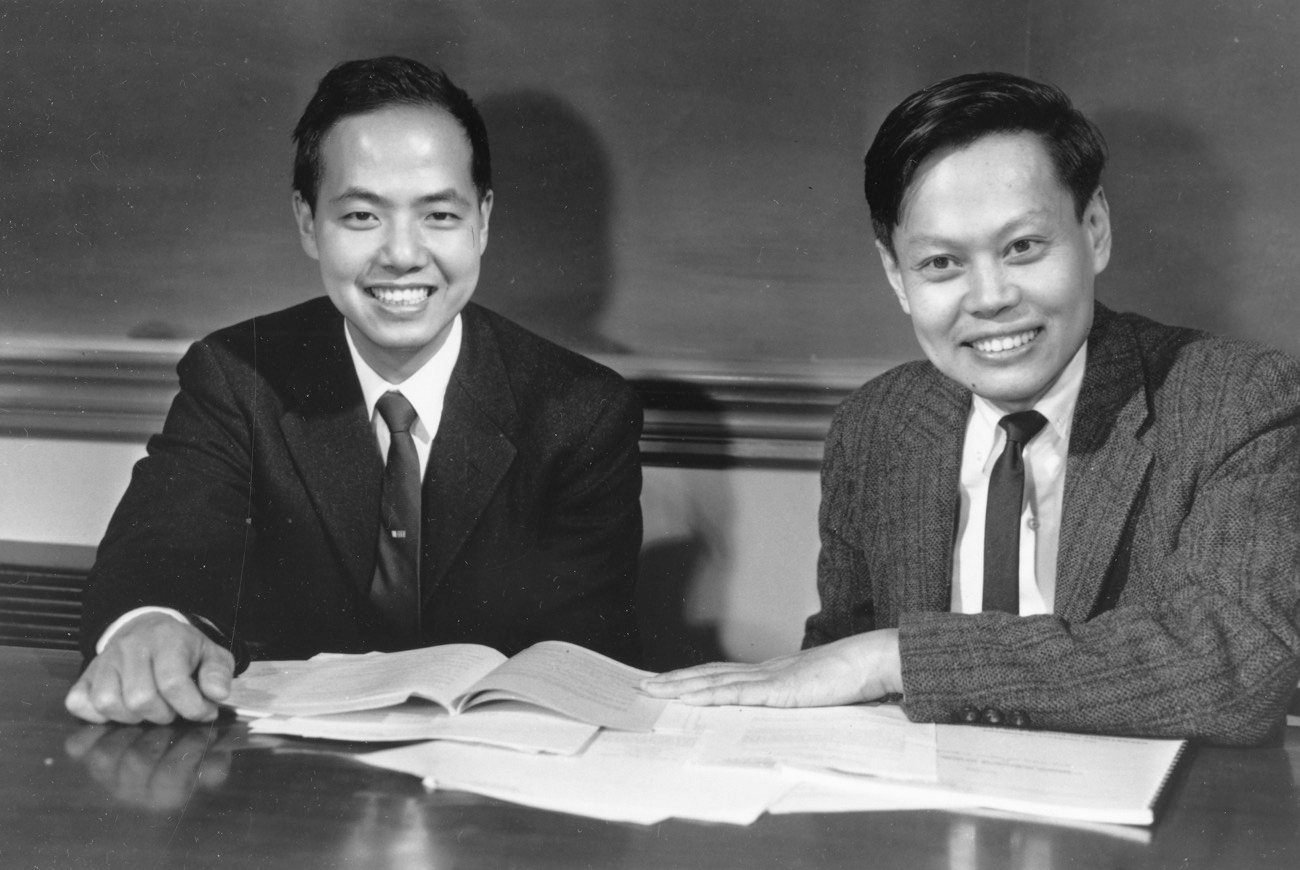 |
| Photo: Supchina |
Tsung-Dao Lee, a Chinese-American physicist, was born on November 24, 1926. He is renowned for his work on nontopological solitons, soliton stars, the Lee-Yang theorem, particle physics, and relativistic heavy ion (RHIC) physics. From 1953 until his retirement in 2012, he taught at Columbia University as a University Professor Emeritus.
At the age of 30, Lee shared the 1957 Nobel Prize in Physics with Chen Ning Yang for their research on weak interactions' violation of the parity law, which Chien-Shiung Wu's renowned Wu experiment experimentally demonstrated between 1956 and 1957.
After World War II, Lee continues to be the youngest recipient of the Nobel Prize in science. After William L. Bragg, who shared the award with his father William H. Bragg in 1915 at the age of 25, and Werner Heisenberg, who received it in 1932 at the same age, he is the third-youngest Nobel laureate in science history. The inaugural winners from China were Lee and Yang. Lee is the youngest American to have ever received a Nobel Prize since he naturalized as an American in 1962.
 Top 10 Weirdest Awards In The World Top 10 Weirdest Awards In The World Receiving awards is an honour but there are some weird awards that you don’t want to receive at all. ... |
5. Carl D. Anderson (31)
 |
| Photo: American Institute of Physics |
The majority of Carl David Anderson's life has been spent in the United States. He was born in New York City (USA) on September 3, 1905, to Swedish parents (Emma Adolfina Ajaxson and Carl David Anderson). He received a B.Sc. in Physics and Engineering from the California Institute of Technology in 1927, and the same institution also granted him a Ph.D. in 1930. He worked there as a Research Fellow from 1930 to 1933 before becoming an Assistant Professor of Physics in 1933 and a Professor of Physics in 1939. He worked on projects for the National Defence Research Committee and the Office of Scientific Research and Development during the war years (1941–1945).
His initial studies focused on the use of X-rays. He examined the spatial distribution of photoelectrons ejected by X-rays from various gases for his doctoral thesis. Along with Professor Millikan, he started his research on cosmic rays in 1930, which eventually resulted in the discovery of the positron in 1932. He has researched both the energy distribution of cosmic ray particles and the energy loss experienced by extremely fast electrons as they move through solid objects. The first concrete evidence that gamma rays from ThC" generate positrons as they pass through material substances was discovered by him and Dr. Neddermeyer in 1933. He has kept up his research on radiation and fundamental particles since 1933. The Physical Review and Science have published the majority of Anderson's studies and discoveries.
In addition to the Nobel Prize, he has received the following scientific honors: the Gold Medal of the American Institute of City of New York (1935); the Sc.D. from Colgate University; the Elliott Cresson Medal from the Franklin Institute; the Presidential Certificate of Merit (1945); the LL.D. from Temple University; and the John Ericsson Medal from the American Society of Swedish Engineers (1960).
4. Paul A.M. Dirac (31)
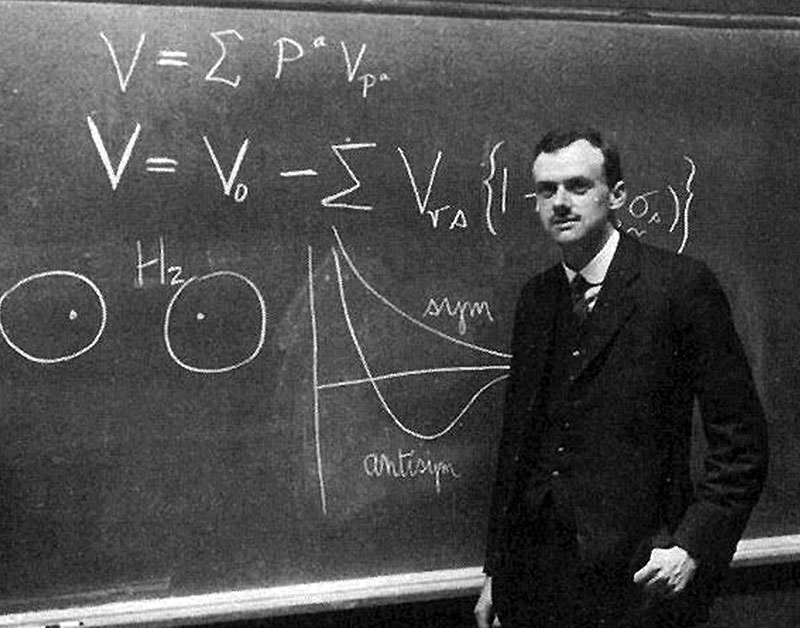 |
| Photo: Getty Images |
Paul Adrien Maurice Dirac, OM FRS, was an English theoretical physicist who is regarded as one of the most influential physicists of the 20th century. He lived from 8 August 1902 to 20 October 1984.
Both quantum mechanics and quantum electrodynamics owe their early development in large part to Dirac. He also developed the Dirac equation, which predicts the existence of antimatter and describes the behavior of fermions, among other discoveries. Erwin Schrödinger and Dirac were jointly awarded the 1933 Nobel Prize in Physics "for the discovery of new productive forms of atomic theory." Additionally, he made a significant contribution to the unification of quantum mechanics and general relativity.
Dirac was thought to have an unusual personality by his friends and coworkers. I have trouble with Dirac," Albert Einstein wrote in a letter to Paul Ehrenfest in 1926. It's terrible how this balance between genius and madness is maintained. He said in a different letter about the Compton effect, "I don't understand Dirac at all."
At Florida State University, he spent the last ten years of his life after serving as the Lucasian Professor of Mathematics at the University of Cambridge, the Center for Theoretical Studies at the University of Miami, and the University of Cambridge.
3. Werner Heisenberg (31)
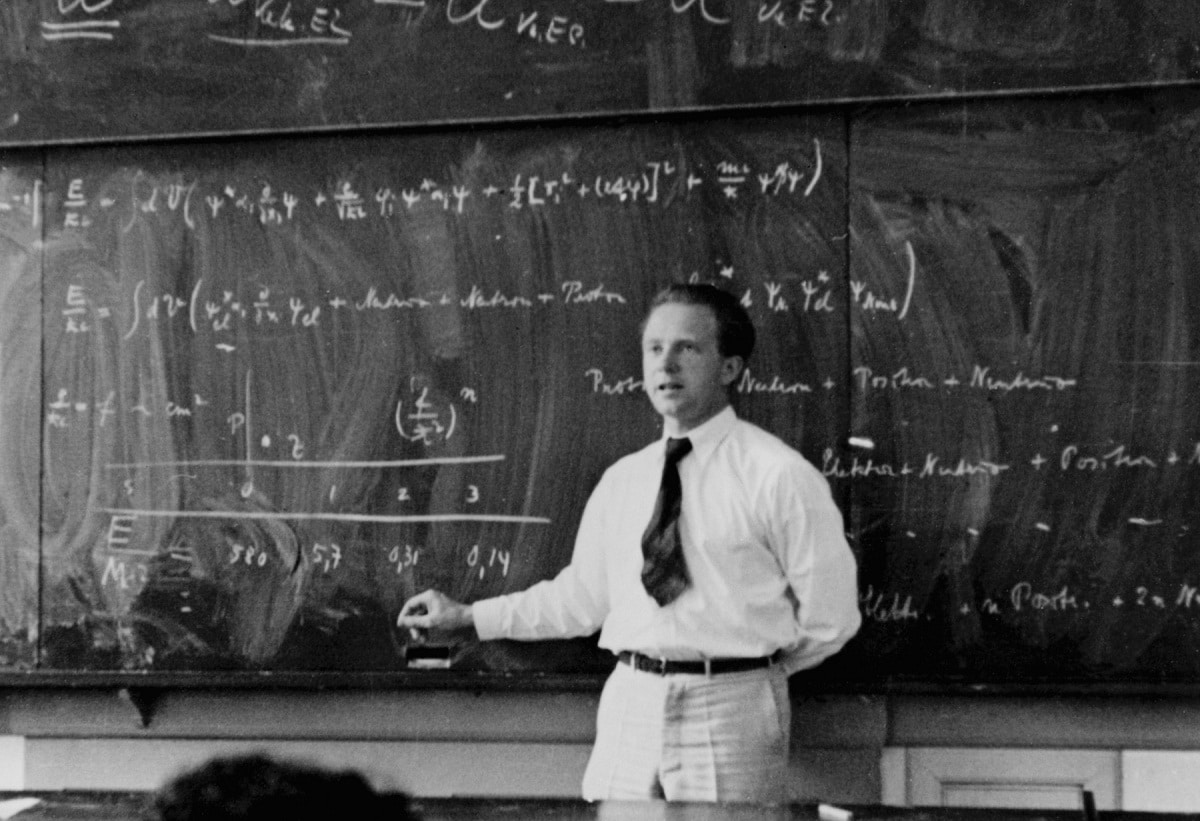 |
| Photo: Getty Images |
One of the major forerunners of quantum mechanics was Werner Karl Heisenberg, a German theoretical physicist who lived from 5 December 1901 to 1 February 1976. In 1925, he published his research in a ground-breaking paper. This quantum mechanics matrix formulation was greatly expanded in the following papers written with Max Born and Pascual Jordan that same year. He is well-known for his 1927 publication of the uncertainty principle. The development of quantum mechanics earned Heisenberg the 1932 Nobel Prize in Physics.
In addition, Heisenberg made significant contributions to the theories of the atomic nucleus, ferromagnetism, cosmic rays, and subatomic particles. During World War II, he served as a key scientist for the German nuclear weapons program. Along with a research reactor in Munich, he was also crucial in the 1957 planning of the first West German nuclear reactor at Karlsruhe.
He became the director of the Kaiser Wilhelm Institute for Physics after World War II, which was soon renamed the Max Planck Institute for Physics. Before the institute was relocated to Munich in 1958, he served as its director. From 1960 to 1970, he served as the Max Planck Institute for Physics and Astrophysics' director.
In addition, Heisenberg served as the president of the Alexander von Humboldt Foundation, the chairman of the Atomic Physics Commission, the chairman of the Nuclear Physics Working Group, and the president of the German Research Council.
2. Lawrence Bragg (25)
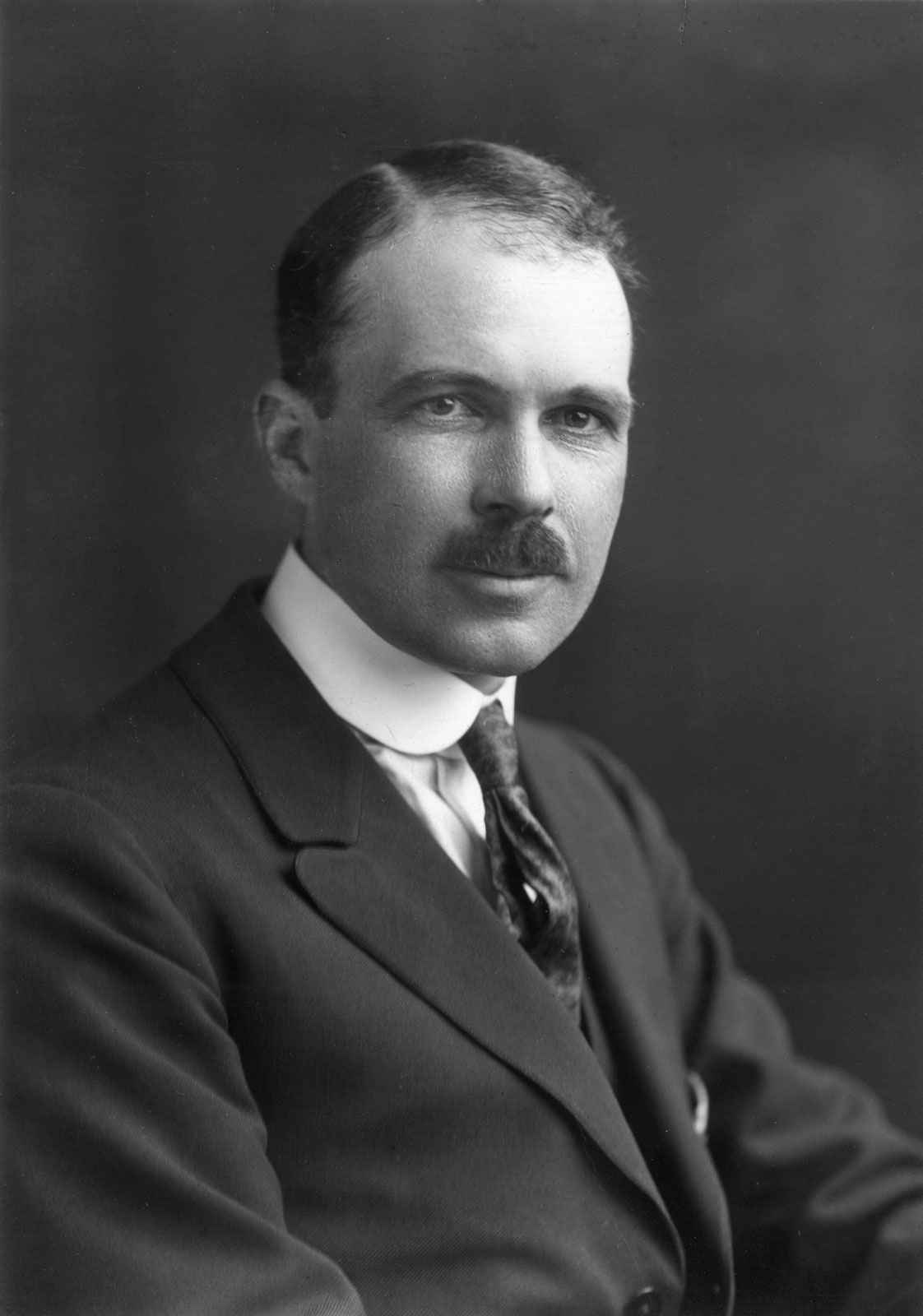 |
| Photo: Britannica |
William Lawrence Bragg, the son of William Henry Bragg, was born on March 31, 1890, in Adelaide, South Australia. He received his early education at St. Peter's College in his hometown before continuing on to Adelaide University to earn a first-class honors mathematics degree in 1908. He entered Trinity College, Cambridge as an Allen Scholar in 1909 after traveling to England with his father, earning first-class honors in the Natural Science Tripos in 1912. He began researching the von Laue phenomenon in the fall of this year, and in November, the Proceedings of the Cambridge Philosophical Society published his first paper on the topic.
He was hired by Trinity College in 1914 as a Fellow and Lecturer in Natural Sciences, and that same year, he also received the Barnard Medal. He had been working with his father from 1912 to 1914, and the outcomes of their research were published in X-rays and Crystal Structure (1915) in a condensed form. W. L. Bragg served as Technical Advisor on Sound Ranging to the Map Section, G.H.Q., France, from this year to 1919. They shared the Nobel Prize in Physics for their joint work in 1915, and in 1918, they were awarded the O.B.E. and the M.C. In 1919, he was named the Langworthy Professor of Physics at Manchester University, a position he held until 1937.
W. Lawrence Bragg served as the National Physical Laboratory's director from 1937 to 1938 and the Cavendish Professor of Experimental Physics at Cambridge from 1938 to 1953. He had been elected a Fellow of the Royal Society in 1921. From 1958 to 1960, he served as the Frequency Advisory Committee's chairman.
Sir Lawrence was knighted in 1941. He has honorary D.Sc. degrees from Dublin, Leeds, Manchester, Lisbon, Paris, Brussels, Liege, and Durham, honorary Ph.D. degrees from Cologne, and honorary LL.D. degrees from St. Andrews. He holds numerous honorary fellowships and is a foreign or honorary member of the scientific academies of the United States, France, Sweden, China, the Netherlands, and Belgium in addition to being a Membre d'Honneur of the French Society of Mineralogy and Crystallography.
1. Malala Yousafzai (17)
 |
| Photo: NYTimes |
Malala Yousafzai (born 12 July 1997) is a Pakistani advocate for women's education and a recipient of the Nobel Peace Prize. She is frequently referred to by her first name, Malala.She is also the youngest recipient of the Nobel Prize and the youngest person from Pakistan. In her native Swat Valley in Khyber Pakhtunkhwa, northwest Pakistan, where the Tehrik-i-Taliban Pakistan occasionally forbade girls from attending school, she is renowned for advocating for human rights, particularly the education of women and children. According to former Pakistani Prime Minister Shahid Khaqan Abbasi, she has become the nation's "most prominent citizen" as a result of her advocacy, which has developed into a global movement.
In Mingora, Khyber Pakhtunkhwa, Pakistan, a Pashtun family gave birth to Ziauddin Yousafzai's daughter. Her family relocated here to manage a network of schools. She looked up to Benazir Bhutto and Muhammad Ali Jinnah as her role models, and she was especially inspired by her father's humanitarian efforts. When she was between the ages of 11 and 12, she blogged for the BBC Urdu under a false name about her experiences living in Swat during the Tehrik-i-Taliban Pakistan's occupation. As the Pakistani military intervened in the area the following summer, journalist Adam B. Ellick produced a New York Times documentary about her life. She gained notoriety by participating in print and television interviews, and activist Desmond Tutu nominated her for the International Children's Peace Prize.
Yousafzai and two other girls were shot by a Tehrik-i Taliban Pakistan gunman on October 9, 2012, while riding a bus in the Swat District after taking an exam in retaliation for her activism. The gunman fled the scene. Yousafzai was shot in the head, and after spending time in the Rawalpindi Institute of Cardiology unconscious and in critical condition, she was later moved to the Queen Elizabeth Hospital in Birmingham, United Kingdom. The attempt on her life sparked an outpouring of support for her on a global scale. Her potential status as "the most famous teenager in the world" was reported by Deutsche Welle in January 2013. A group of 50 prominent Muslim clerics in Pakistan issued a fatw against those who attempted to kill her a few weeks after the murder attempt. Governments, human rights organizations, and feminist organizations all denounced the Tehrik-i-Taliban Pakistan on a global scale. Officials from the Tehrik-i-Taliban of Pakistan responded to criticism by denouncing Yousafzai even more and announcing plans for what they believed to be a necessary second assassination attempt. They received more international condemnation as a result of their statements.
Yousafzai rose to prominence as an advocate for the right to education following her recovery. She and Shiza Shahid founded the Birmingham-based nonprofit organization the Malala Fund, and in 2013 they co-wrote the best-selling book I Am Malala. She was awarded the 2013 Sakharov Prize in addition to the first National Youth Peace Prize of Pakistan in 2012. Along with Indian Kailash Satyarthi, she shared the 2014 Nobel Peace Prize that year. She won the Nobel Prize at the age of 17, making her the youngest recipient ever.
FAQs About Nobel LaureatesWho has won the Nobel Prize at the youngest age? Malala Yousafzai, who received the Nobel Peace Prize in 2014 at the age of 17, is the youngest recipient of the award in history. Who received the Nobel Peace Prize when he was the youngest man? At age 35 in 1964, Martin Luther King Jr. became the youngest recipient of the Nobel Peace Prize. What does being a Nobel Laureate mean? A person who has won a Nobel Prize in one of the following six categories is referred to as a "Nobel laureate": physics, chemistry, medicine, literature, peace, and economic sciences. Who wins the Nobel Prize? A candidate for the Nobel Prize may be nominated and chosen by the appropriate Nobel Prize committees if they have made outstanding contributions to their field. How many people have won the Nobel Prize? There have been 989 Nobel laureates as of 2023, with 60 of them being female. Who is the most well-known Nobel Prize winner? Despite the fact that there have been many well-known Nobel laureates, some of the most well-known ones are Mother Teresa, Nelson Mandela, Marie Curie, Albert Einstein, and Martin Luther King Jr. How is a Nobel Prize winner selected? The selection and nomination of Nobel laureates is carried out by particular Nobel Prize committees. Receiving nominations from qualified individuals, reviewing and evaluating those nominations, and choosing a winner based on the standards established for each prize category comprise the process. |
Conclusion
We try to find young people on the list of Nobel laureates in history. However, this world's most prestigious award does not seem to be the playground of young people.
However, young people should not be too disappointed, because in history there have been Nobel Prize winners at the age of 17, 25 and 31, 32 years old.
 Top 10 Most Famous Transgender Models Of All Time Top 10 Most Famous Transgender Models Of All Time Transgender models are changing the modeling industry, making it more inclusive. It is a fact that the progress made by them cannot be ignored. Read ... |
 Top 10 Hottest Tennis Players in the World of All Time Top 10 Hottest Tennis Players in the World of All Time The male tennis players also have some hot guys playing around. Check out the top 10 Most Handsome and Hottest Tennis Players in the World ... |
 Top 10 Hottest Tennis Players in the World – 2021/2022 Top 10 Hottest Tennis Players in the World – 2021/2022 Tennis is an amazing sport that needs a lot of hard work and flexibility. Check out the list of the 10 most handsome and hottest ... |
 Top 10 Most Handsome Hockey Players in Canada for 2021/2022 Top 10 Most Handsome Hockey Players in Canada for 2021/2022 Hockey players are undoubtedly strong and handsome as well. Check out the list of 10 most handsome and hottest Canadian hockey players right below! |























